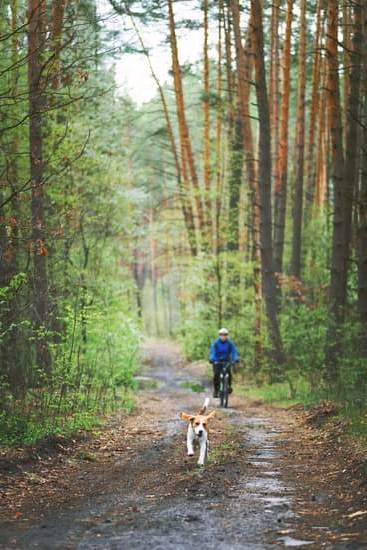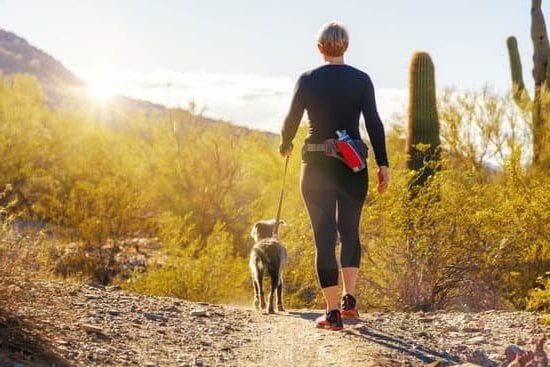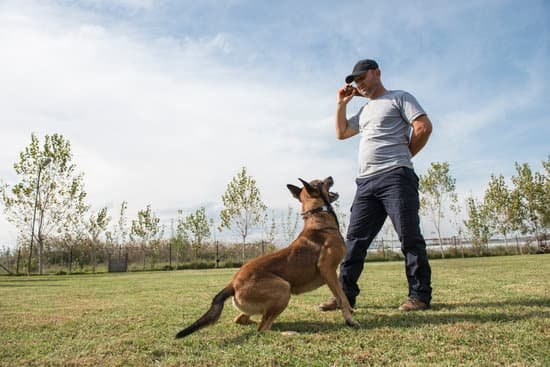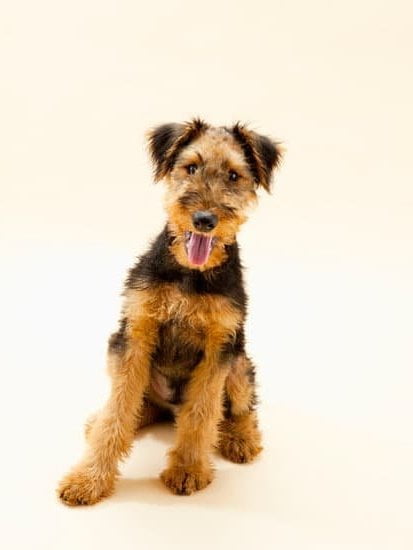Training your dog to pee in the bathroom is a crucial part of their overall potty training. It not only helps keep your home clean but also provides a sense of routine and discipline for your pet. Understanding the importance of this training process is the first step in effectively teaching your dog where it’s appropriate to do their business.
Creating a designated bathroom area for your dog is essential in helping them understand where they should relieve themselves. By choosing the right training tools and supplies, such as potty pads or artificial grass patches, you can set up an area that simulates the outdoors and encourages your dog to use it consistently.
Establishing a consistent bathroom schedule for your dog goes hand in hand with creating a dedicated bathroom area. By using positive reinforcement techniques, you can encourage your dog to use this area regularly. However, accidents may still occur during the training process, so addressing them effectively is important in maintaining progress. Monitoring your dog’s progress and making necessary adjustments will ensure long-term success in their bathroom training.
Creating a Designated Bathroom Area for Your Dog
First, choose a specific spot in your home or yard that will serve as your dog’s bathroom area. This could be a corner of the yard, a specific room or even a section of the balcony if you live in an apartment. It’s important to choose an area that is easily accessible for your dog, but also one that is convenient for you to clean and maintain.
Next, consider the surface of the designated bathroom area. Some dogs may prefer grass or dirt while others may be trained to use pee pads or artificial grass. Take into account your dog’s preferences and habits when selecting the surface for their bathroom area.
Finally, make sure the designated bathroom area is clearly marked and easily recognizable for your dog. You can use signs, barriers, or specific scents to help your dog identify this space as their bathroom spot. Consistency is key when creating a designated bathroom area for your dog.
Now that you have established a designated bathroom area for your dog, it’s time to start the training process on how to train your dog to pee in the bathroom In order to effectively teach them how and where to relieve themselves. Remember that patience and consistency are crucial during this stage of potty training.
Choosing the Right Training Tools and Supplies
When it comes to training your dog to pee in the bathroom, having the right tools and supplies can make a big difference in the success of your training efforts. Here are some key items you’ll need to have on hand.
Potty Pads or Litter Box
One of the first things you’ll need is a designated bathroom area for your dog. Depending on your living situation and your dog’s preferences, you may choose to use potty pads or a litter box. Both options can be effective, so consider what will work best for your dog and your home.
Cleaning Supplies
Accidents are bound to happen during the training process, so it’s important to have the right cleaning supplies on hand. Look for pet-friendly enzymatic cleaners that are designed to eliminate odors and stains effectively. This will help discourage repeat accidents in the same spot.
Treats and Rewards
Positive reinforcement is a key part of potty training success, so stock up on plenty of treats and rewards for your furry friend. When your dog successfully uses the designated bathroom area, be sure to praise them and offer a delicious treat as a reward. This will help reinforce the desired behavior.
By having these essential tools and supplies at the ready, you’ll be better prepared to tackle the task of teaching your dog where to go potty in the house. Consistency and patience are also important during this process, so remember to stay consistent with the chosen bathroom area and schedule, while staying positive throughout the training journey.
Establishing a Consistent Bathroom Schedule for Your Dog
- Set specific times for bathroom breaks: Determine when your dog typically needs to go potty based on their age, breed, and size. Puppies may need to go more frequently, while adult dogs can usually hold it longer. Create a schedule that includes regular potty breaks throughout the day, especially after meals, playtime, and naps.
- Use verbal cues: When it’s time to take your dog out for a bathroom break, use a specific phrase or command such as “Let’s go potty” or “Time to go outside.” Consistently using the same cue will help your dog associate the phrase with the act of going to the bathroom.
- Be patient and consistent: It’s important to stick to the established schedule every day, even on weekends. Consistency is key when it comes to potty training. If you are not consistent with the schedule, your dog may become confused about when they are supposed to go potty.
- Monitor water intake: Keep track of when and how much water your dog drinks, especially in the evening. Limiting water intake before bedtime can help prevent accidents during the night.
By following these tips, you can effectively establish a consistent bathroom schedule for your dog as part of their overall potty training routine. Understanding your dog’s needs and behavior patterns is crucial in this process, so be observant and patient as you work towards success in training your dog to pee in the bathroom.
Using Positive Reinforcement Techniques to Encourage Bathroom Behavior
Positive reinforcement is a crucial aspect of training your dog to pee in the bathroom. Dogs respond well to positive reinforcement, which involves rewarding your dog for exhibiting the desired behavior. When it comes to bathroom behavior, this can include giving treats, verbal praise, or even extra playtime when your dog successfully uses the designated bathroom area.
One effective technique for positive reinforcement is clicker training. This involves using a clicker to create a distinct sound that signals to your dog that they have done something right. You can use the clicker immediately after your dog pees in the bathroom area, followed by giving them a treat or offering verbal praise.
Consistency is key when using positive reinforcement techniques. Make sure to reward your dog every time they use the bathroom area as intended. This will help reinforce the behavior and encourage them to continue doing so in the future.
It’s important to keep in mind that every dog is different, so it may take some time for your pet to fully grasp how to train your dog to pee in the bathroom effectively using positive reinforcement techniques. Be patient and stay consistent with your training efforts, and you’ll likely see progress over time.
| Positive Reinforcement Techniques | Benefits |
|---|---|
| Clicker Training | Creates a clear signal for desired behavior |
| Consistent Rewards | Reinforces proper bathroom behavior |
| Varying Rewards (treats, praise, playtime) | Makes training more enjoyable for the dog |
Addressing Accidents and How to Handle Them Effectively
Accidents are bound to happen during the process of training your dog to pee in the bathroom. It’s important to handle these accidents effectively in order to avoid any setbacks in the training process. One of the most crucial things to remember when addressing accidents is to remain calm and patient with your dog.
Immediate Response
When you catch your dog having an accident or come across it after the fact, it’s important to react appropriately. Avoid scolding or punishing your dog, as this may only confuse them and create negative associations with peeing. Instead, gently interrupt them if caught in the act and immediately take them to their designated bathroom area.
Cleaning and Deodorizing
After an accident has occurred, it’s essential to thoroughly clean and deodorize the area. Dogs have a strong sense of smell, so any lingering scent of urine may encourage them to pee in the same spot again. Use a pet-safe cleaner designed specifically for pet accidents, and be sure to follow the instructions carefully.
Adjusting Your Approach
If accidents continue to happen frequently, it may be a sign that you need to adjust your training approach. Consider re-evaluating your dog’s bathroom schedule or finding ways to increase their motivation for using their designated bathroom area. Consistency is key when it comes to potty training, so making necessary adjustments can help set your dog up for success.
By handling accidents effectively and maintaining a positive attitude throughout the training process, you can help your dog transition successfully from peeing outside to peeing in the bathroom.
Monitoring Your Dog’s Progress and Making Necessary Adjustments
After establishing a consistent bathroom schedule and using positive reinforcement techniques, it is important to monitor your dog’s progress and make necessary adjustments. Monitoring your dog’s progress will help you identify any areas that need improvement and make the necessary changes to ensure successful bathroom training.
Here are some ways you can monitor your dog’s progress and make necessary adjustments:
1. Keep a bathroom log: Keeping track of when your dog goes to the bathroom can help you identify patterns and adjust the bathroom schedule if needed. You can create a simple log with the date, time, and whether or not your dog successfully peed in the designated area.
2. Observe behavior: Pay attention to your dog’s behavior before they go to the bathroom. Signs such as sniffing around or circling in a specific area can indicate that they need to go. If you notice these signs, prompt them to go to the designated bathroom area.
3. Adjust the schedule: If accidents continue to occur at certain times of the day, consider adjusting the bathroom schedule accordingly. For example, if your dog consistently has accidents in the evening, take them out for a bathroom break right before bedtime.
4. Seek professional help: If you’re struggling with training your dog to pee in the bathroom, don’t hesitate to seek help from a professional trainer or behaviorist who can provide guidance on how to train your dog effectively.
By monitoring your dog’s progress and making necessary adjustments, you can ensure that they successfully learn how to pee in the bathroom without any issues.
Ultimately, consistency, patience, and a positive attitude are key when it comes to successfully training your dog to pee in the bathroom.
Tips for Maintaining Bathroom Training Success in the Long Term
As pet owners, understanding the importance of potty training for dogs is crucial in ensuring a harmonious coexistence with our furry friends. Creating a designated bathroom area for your dog and choosing the right training tools, such as pee pads or artificial grass, are essential steps in successfully training your dog to pee in the bathroom. However, establishing a consistent bathroom schedule and using positive reinforcement techniques are equally important in encouraging the desired behavior.
Even with all the necessary training in place, accidents are bound to happen during the process. It’s imperative to address accidents calmly and effectively, without resorting to punishment. Monitoring your dog’s progress and making necessary adjustments along the way is also key in achieving long-term success. Not all dogs learn at the same pace, so it’s important to be patient and persistent in your approach.
To maintain bathroom training success in the long term, consistency is paramount. Continuously reinforcing positive behavior and regularly revisiting training routines can help solidify good habits. Additionally, staying mindful of any changes in your dog’s environment or routine can help prevent setbacks in their bathroom behavior.
By following these tips for maintaining bathroom training success in the long term, pet owners can enjoy a clean and stress-free living space while strengthening their bond with their beloved canine companion. Remember that with patience and dedication, it is possible to achieve success on how to train your dog to pee in the bathroom.
Frequently Asked Questions
How Do You Train a Dog to Use an Indoor Bathroom?
Training a dog to use an indoor bathroom takes time, patience, and consistency. One method is to use pee pads or artificial grass in a designated area. Rewarding the dog for using the bathroom in the right place reinforces the behavior.
Can a Dog Be Trained to Use the Bathroom?
Yes, dogs can be trained to use the bathroom in a specific area, whether indoors or outdoors. By using positive reinforcement, consistent training methods, and patience, most dogs can learn where it is appropriate to relieve themselves.
How Do I Get My Dog to Pee in a Certain Place?
To get your dog to pee in a certain place, you can use scent markers or pheromones to attract them to that spot. You can also establish a routine for potty breaks and reward your dog for peeing in the desired location. Consistency is key when training your dog where to go to the bathroom.

Welcome to the blog! I am a professional dog trainer and have been working with dogs for many years. In this blog, I will be discussing various topics related to dog training, including tips, tricks, and advice. I hope you find this information helpful and informative. Thanks for reading!





